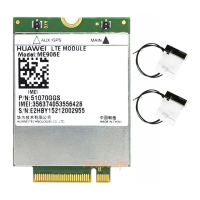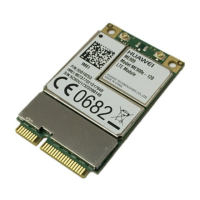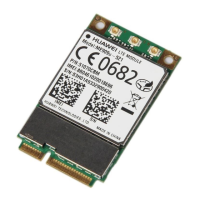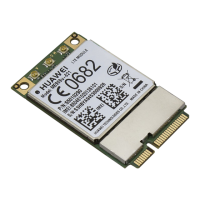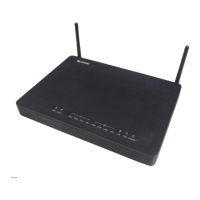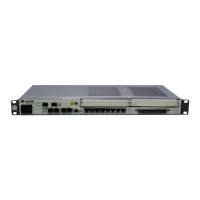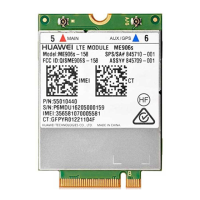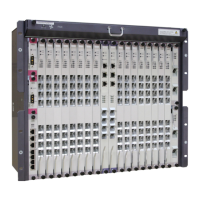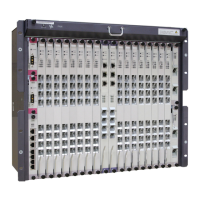Figure 2-25 Recommended circuit of USB interface
Requirements for USB signal layout and traces:
1. USB_DM and USB_DP are required to control the differential impedance 90 Ω.
2. R1 and R2 are ready for dealing with impedance matching. You can adjust the
value of R1 or R2 in order that the differential impedance of the USB signal
should be 90 Ω.
3. The length of the gap between USB_DM and USB_DP should not exceed 5mil.
4. The USB differential signal trace must be as short as possible, and laid out away
from high-speed clock signals and other periodic signals as far as possible.
5. Minimize through-holes and turning angles on the USB signal trace to reduce
signal reflection and impedance change.
6. Do not route the USB signal trace under the following components: crystal,
oscillator, clock circuit, electromagnetic component, and IC that uses or
generates clocks.
7. Avoid stubs on the USB signal trace because stubs generate reflection and
affect the signal quality.
8. Route the USB signal trace on a complete reference plane (GND) and avoid
crossing inter-board gaps because inter-board gaps cause a large reflow
channel area and increase inductance and radiation. In addition, avoid signal
traces on different layers.
9. The USB signal trace must be far away from core logical components because
the high current pulse is generated during the state transitions process of core
components may impose interference on signals.
10. The USB signal trace must be far away from board edges with a minimum
distance of 20 × h (h indicates the vertical distance between the trace and the
reference layer) to avoid signal radiation.
11. C1 and C2 are ready for dealing with filter differential mode interference and C3
is ready for dealing with filter common mode interference. You can choose the
value of the C1, C2 and C3 according to the actual PCB which is integrated 30
mm×30 mm LGA Module.

